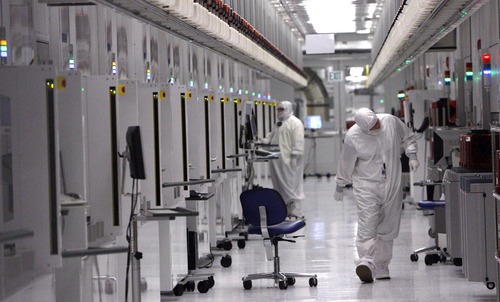This is an archived article that was published on sltrib.com in 2014, and information in the article may be outdated. It is provided only for personal research purposes and may not be reprinted.
State economic development officials have played fast and loose in committing the state to more than $600 million in economic incentives in the last eight years, an audit of the Governors Office of Economic Development reported Tuesday.
But officials with the agency defended their handling of the program, designed to lure businesses to the state, saying they have been given broad discretion by the Legislature and used it wisely. The proof, they say, is nearly 13,000 jobs and $128 million in tax revenue attracted to the Beehive State and one of the nation's strongest economies.
The tax breaks have been instrumental, argued GOED executive director Val Hale, in attracting companies like Adobe, IM Flash, Boeing, Goldman Sachs, Proctor & Gamble and Merit Medical to the state.
Utah State Auditor John Dougall — who was a critic of the incentive programs as a legislator before becoming auditor — implored legislative leaders to study the audit and investigate the agency themselves.
"I encourage you to not just take our word, but exercise your oversight as a legislative body," Dougall said.
Rep. Rebecca Chavez-Houck, D-Salt Lake City, said she understands GOED needs flexibility to compete for businesses, but also needs transparency and oversight.
"What I'm seeing here is a very large discrepancy between discretion and accountability," she said. "I understand there needs to be some nimbleness, but nimbleness on the backs of taxpayers is something many of us are not comfortable with."
Legislative leaders voted to ask the Legislature's business and labor committee to delve deeper into the findings.
The audit focused on the "economic development tax increment financing (EDTIF)" incentives that GOED has provided since 2006.
In the past eight years, the audit said, the agency has committed more than $600 million worth of incentives to companies that promised to create almost 12,000 jobs. It did so by offering to return to these companies some of the new taxes generated by moving a business to Utah or expanding existing operations here.
To qualify, recipients had to show GOED that their companies would create a certain number of jobs paying more than the countywide average. Once the project is up and running and the recipient verifies it has lived up to its promises, the state rebates up to 30 percent of the recipient's new taxes.
The audit found that GOED has significantly lowered its criteria for rewarding businesses that locate to Utah. In 2006, the program focused on bringing in higher wage jobs and dictated that, on average, the jobs created had to pay 147 percent of the average wage for the county.
Since then, the bar has been lowered to 125 percent of the average wage and, in rural counties, the jobs only have to be on par with the average wage. Moreover, since 2010, GOED has included health benefits toward the average wages, without, according to Dougall, the legal authority to do so.
The result has been that in an urban county, the wages — minus health benefits — that companies looking for an incentive had to pay has dropped from $52,000 per year to just $41,000. Meanwhile, the average wages in urban counties now sit at $42,000 per year.
The report also identified instances where GOED apparently bent the rules for companies that didn't meet the requirements to get a tax break from the state. For example, it "regularly" agreed to not count lower-paid workers that would have reduced the average wage below the required threshold. It allowed companies to include contractors in their job numbers. And allowed companies to include workers already at a company toward the job-creation numbers so that a company would qualify for a tax break.
The agency also issued numerous misleading public statements, pumping up the job creation numbers based on promises of future positions.
"As watchdogs of taxpayer funds, we certainly are concerned," said David Pulsipher, performance audit director. "We like to see that taxpayer money is spent appropriately."
The findings are significant, Pulsipher noted, because the value of GOED's incentives is projected to double to $1.3 billion by 2024.
But Hale, who stepped in as GOED's executive director in late July, said the GOED board has been given broad discretion by the Legislature to exercise its judgment in awarding tax incentives. During the economic collapse in 2008 and 2009, GOED decided to grant some companies latitude due to the severe hardship and in 2010 decided to let them begin counting health benefits toward their overall compensation figures.
Other states are mimicking Utah's model, which generates $3.19 in new state revenue for every $1 in tax breaks given, Hale said. And the breaks are given after the companies pay their taxes. That means the state will collect $1.9 billion before it has to pay out the $600 million in incentives.
"The Utah model is working and it's working incredibly well," Hale said. "Many people, including me, believe the EDTIF program instituted by foward-thinking legislators has played a significant role in [helping Utah's economy]."
Hale pointed to a review by Tanner LLC commissioned by GOED that said the agency was within the bounds of the discretion the Legislature granted it in administering the program.
"GOED has used that flexibility judiciously," said Kent Bowman, in the Tanner report.
The Tanner report was not a full audit of the agency. GOED officials said Tanner spent 270 hours conducting its review. Auditors said they spent 4,500 hours over six months conducting its performance audit.





